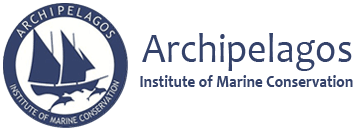The Aegean Sea welcomes three of the seven species of marine turtles that are found worldwide, namely the loggerhead turtle (Caretta caretta), the green turtle (Chelonia mydas) and the leatherback turtle (Dermochelys coriacea). The leatherback’s characteristic shell makes it easily recognisable, whereas the green turtle and loggerhead turtle are more difficult to distinguish.

The natural habitat of these sea turtles are pelagic areas, even if they are known to come ashore to nest. The loggerhead and the green turtle can also be seen in coastal areas, especially those containing seagrass, algae and Posidonia oceanica meadows on which they feed. Contrarily, leatherback turtles are often found offshore, where they feed on gelatinous zooplankton and cephalopods.

The Eastern Mediterranean forms one of the main nesting grounds for loggerhead and green sea turtles (no evidence currently exists to suggest that leatherback turtles breed in the Mediterranean). Interestingly, tagging studies have revealed that adult sea turtles return to lay eggs within 5-50 kilometers of their own birth sites, potentially using the Earth’s magnetic field to navigate their way back. Sea turtles’ nesting season ranges from May to October, but individuals do not lay eggs every year. Combined with the relatively low survival rate of hatchlings, this makes sea turtles slow to recover from population declines.

During our recent boat surveys, Archipelagos’ research team encountered and collected data on two loggerhead turtles. Our goal is to use this data to collaborate with relevant authorities and implement effective conservation measures. For example, local sea turtle populations can be protected by monitoring and preserving Posidonia meadows in the turtles’ main feeding grounds. Additionally, security areas can be set around sea turtle nests to prevent eggs from being trampled. However, some larger-scale threats require the cooperation of multiple stakeholders and are therefore more difficult to mitigate. As such, governments, conservation organisations and fishermen need to work together to reduce unnecessary by-catch of sea turtles in fishing nets. Similarly, the threat of plastic and chemical pollution to sea turtles and other wildlife needs to be addressed on a large scale. Nevertheless, each of us individually can contribute to the protection of sea turtles by reducing our plastic consumption, participating in beach clean-ups, and spreading awareness.

By
Bastien Rigaux, MSc. Oceanography at University of Liège, Belgium;
Jessica Schneider, BSc. Environmental Sciences and Engineering at EPFL, Switzerland

